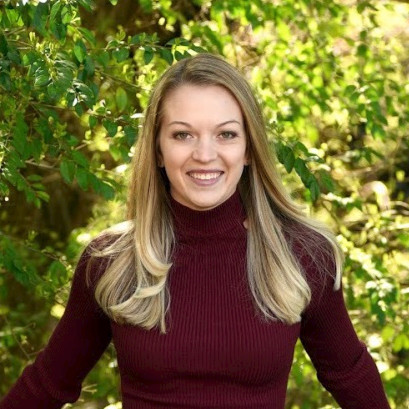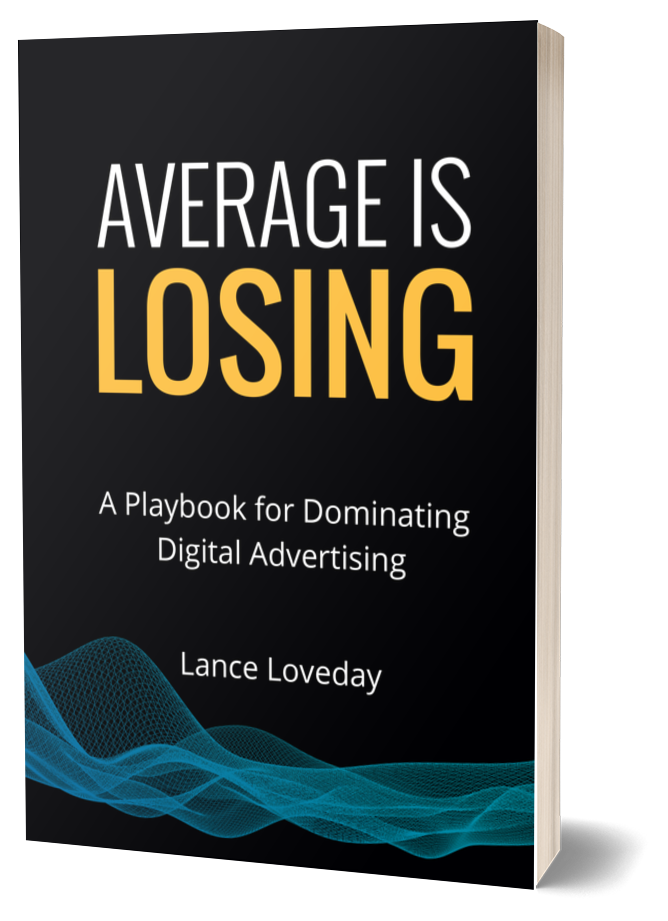By far, 2020 was an unforgettable year.
Digital ad experts dealt with many curveballs, including privacy changes across the industry, new ad formats and changes to machine learning algorithms. And we shall never forget—COVID-19.
While no one can predict precisely what will take place this year, it’s still vital that brands understand the latest trends transforming the industry today.
Doing so will help you identify new growth opportunities for your marketing campaigns and which strategies you need to drive impact.
Here are the seven latest digital advertising trends in 2021 you need to know, according to our Closed Loop experts.

One day, digital marketers will look back on these days with fond nostalgia—an era when simple website code and automatic opt-in eased audience tracing.
But those days will soon be at an end. The future—first party-data unlocking tracking and attribution.
Facebook advertisers are already getting an early taste of the future with Apple’s impending iOS 14 changes—making the critical IDFA tag opt-in by default instead of opt-out. Brands can expect difficulties in tracking 40% of U.S. smartphone users with iOS devices via the Facebook pixel.
If Facebook advertisers can no longer rely on the pixel to track users and their subsequent conversions, what can they use? Their own data.
Now is the time to get serious about implementing the Facebook Conversions API, which directly connects an advertiser’s server data with Facebook. Instead of using pixel events, which are usually proxies for the real events marketers care about anyway (Opportunities, MQLs, Closed Won), advertisers can start to use their own events. Since retargeting or building audiences off pixel-based audiences won’t be as easy, we’ll need to additionally rely more on email addresses, phone numbers and the like.
To make the most of this customer data for both remarketing and audience development purposes, advertisers should also strongly consider building or acquiring customer data platforms to better organize and activate this data across multiple platforms.

Automation will remain king in 2021. Machine learning is the new standard, and advertisers have less control than ever over the intricacies of campaign management on Google. In 2020, Google rolled out several changes to this end:
In 2021 with more changes on the horizon, ad managers need to balance trust in the algorithm with careful manual interventions as needed, the essential combination of human + machine.

Can a solid lead generation strategy fill a sales pipeline? Sure. Can those leads move down the funnel in a timely manner and help a company hit its revenue goals? Maybe.
Sixty-one percent of B2B companies have an ABM program in place, according to Terminus’ 2020 State of ABM Report. This number is growing as marketing budgets tighten due to the COVID-19 pandemic. Focusing on key accounts with ABM has proven to increase lead-to-close rates, shorten sales cycles and reduced wasted budget.
Traditional marketing fills a sales pipeline with many leads at the top of the funnel—some qualified, some not. Then, working down the funnel to identify hand-raisers takes time and money.
Instead, ABM focuses on a list of target accounts in a cross-channel strategy to reach decision-makers of various levels. Because multiple employees, departments and stakeholders may need to demo, research and approve a product or service purchase, creating tailored content for each target persona funnel stage will be vital to aligning your messaging for quicker decision-making.
In 2021, we’ll see more ABM for retention and expansion of existing customers as more marketers realize client retention’s cost-effectiveness over new client acquisition.

As advertisers, we’re constantly evaluating how we can capture more of our target audience’s attention to generate the KPIs we care about—CTR, clicks and conversions. Now more than ever, it’s crucial to stand out from your competition across digital platforms. In 2021, GIFs and short-form videos will do just that.
In Q3 of 2020, we conducted a conversion lift test on Facebook with one of our clients comparing static image ads and light-weight motion ads. Lightweight motion ads add movement to an ordinarily static image to capture more of the viewer’s attention to engage them. Over the quarter, we saw a 17% higher conversion lift in the lightweight motion ads compared to their static counterparts. By adding a little bit of motion, we were able to increase the ad’s value to the viewer, which led to more conversions.
Short-form video is additionally a cost and time effective way to advertise. Facebook has a template tool to add motion to your static images in minutes. While it may be tempting, a full-scale production isn’t necessary to create a GIF or short-form video. Since lightweight motion ads don’t require sound, don’t worry about purchasing music or countless editing hours. All you need is a few seconds and some creativity for execution.
Undeniably, GIFs and short-form video are increasingly becoming a more effective way to advertise. If brands want to stay on top of digital advertising trends in 2021, they should use this medium to maintain their competitive edge across feeds.

Clients have traditionally expected demand gen teams to tie every dollar back to their impact on the bottom line. While this direct visibility into ROI is a win for clients and marketers alike, this intense focus has led many down a path of cherry-picking short-term wins at the bottom of the funnel and dismissing any tactic that doesn’t tie back to revenue in the short-term.
The bottom-of-funnel focus has been exacerbated by organizational structures that silo demand generation from brand, sales enablement and customer success teams. As a result, cohesive and full-funnel marketing strategies become challenging to plan and execute. However, these siloed walls are starting to crumble. Heeding agency advice, brands are now aligning demand gen goals across the organization and realizing softer, upper-funnel KPIs are critical to long-term success.
At its core, marketing is about showing the right message to the right person at the right time. Marketing is a science, but it is also an art. If you are confident in your timing, targeting and messaging—do it. Track it as best you can, but understand that attribution, for all of its gains over the past decade, is still full of holes. Don’t put off doing something that intuitively makes sense just because you can’t quantify the revenue it produces in the short-term. Priming potential buyers and getting into their consideration early on is beyond valuable.
In 2021, don’t hesitate to identify softer KPIs that validate growth in awareness, recall, engagement and consideration. Then, develop a plan to iterate as the data suggests. Doing so will build marketing muscle that’ll propel you past your competitors over time.

In 2020, we saw many new ad features and options roll out across all social platforms, and we predict this trend to continue far into 2021.
This past year, Instagram introduced Reels and Shop for personal accounts, and we’re anticipating the social media platform to expand its advertising options to account for those new features. Advertisers can look forward to new possibilities for their ads in formats we’ve never seen before.
Brands can also expect a massive push toward social ads becoming more entertaining in light of increased ad saturation on these platforms. Likewise, as the trend for engaging, authentic content grows in popularity among consumers, advertisers will have to become more creative with assets. As a result, we’ll see more strategies that interact and resonate with target audiences.
Dynamic ad copy and creative options additionally picked up this year and are here to stay. While advertisers may not enjoy the lack of control compared to static ad formats, Closed Loop has seen a lift in conversions and ROAS on campaigns utilizing dynamic ad formats. Advertisers should let this work to their advantage by adapting and using dynamic options now to refine and optimize campaigns.
Now, more than ever, advertisers should be flexible as we’ll likely see more updated features throughout the year. To dominate social ads in 2021, savvy professionals will adapt and embrace new ad formats to reach their ideal customers.

The pandemic was undeniably the most significant topic of 2020. As a global health issue, COVID-19 impacted advertising practitioners at home and at work. Brick and mortar agencies transitioned to remote work as social distancing ensured employees’ health and safety. Many organizations struggled to navigate their new normal and maintain business continuity.
As the pandemic continues, remote work isn’t going anywhere anytime soon, if not ever. Working from home is the future, according to many experts. Closed Loop has been historically forward-thinking. With nearly 70% of our employees already remote, we were prepared for the unprecedented change compared to many entities who hesitated to transform digitally.
Before the crisis, companies that fostered remote culture had the first-mover’s advantage to outperform in a post-covid world. While other businesses grappled with the transition, prepared companies focused their intensity on assisting clients, driving innovation, elevating company culture and supporting employees’ evolving needs.
The biggest lesson this shift taught everyone was that it’s essential to visualize and prepare for the future. There’s no more doing things how they’ve always been done. Driving innovation is critical to an organization’s long-term success. Brands should identify trends and invest in the tools and strategies today that allow them to drive impact and work more effectively.
Leading from the front is hard and lonely at first. But it’s always the pioneers who reap the greatest reward.
My new book, “Average is Losing” is finally here! I created this playbook to help savvy advertisers close the gap between winning and run-of-the-mill paid advertising campaigns.
It’s filled to the brim with the latest strategies, tactics and tips our Closed Loop experts use to help our clients seek exponential growth.
Are you ready to rise above average campaign performance? Start your business on the path to PPC domination today!
– Lance Loveday
